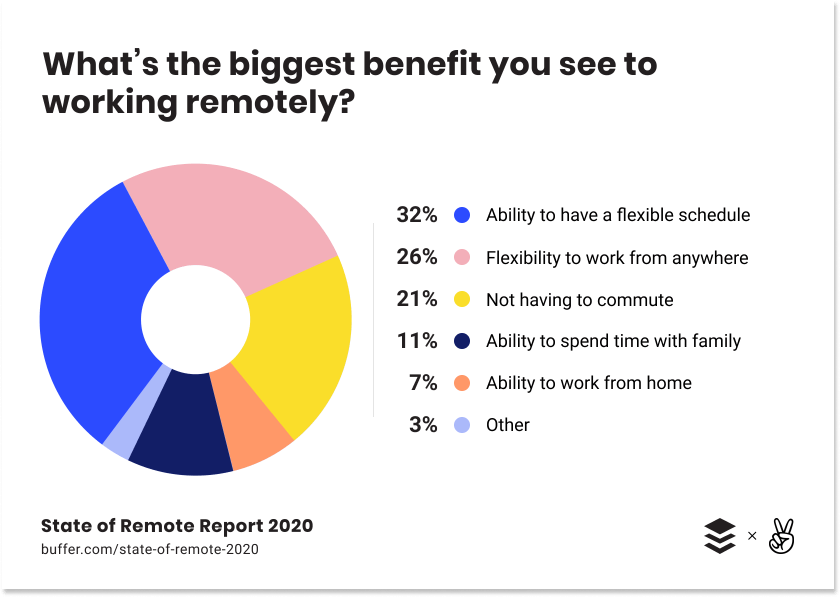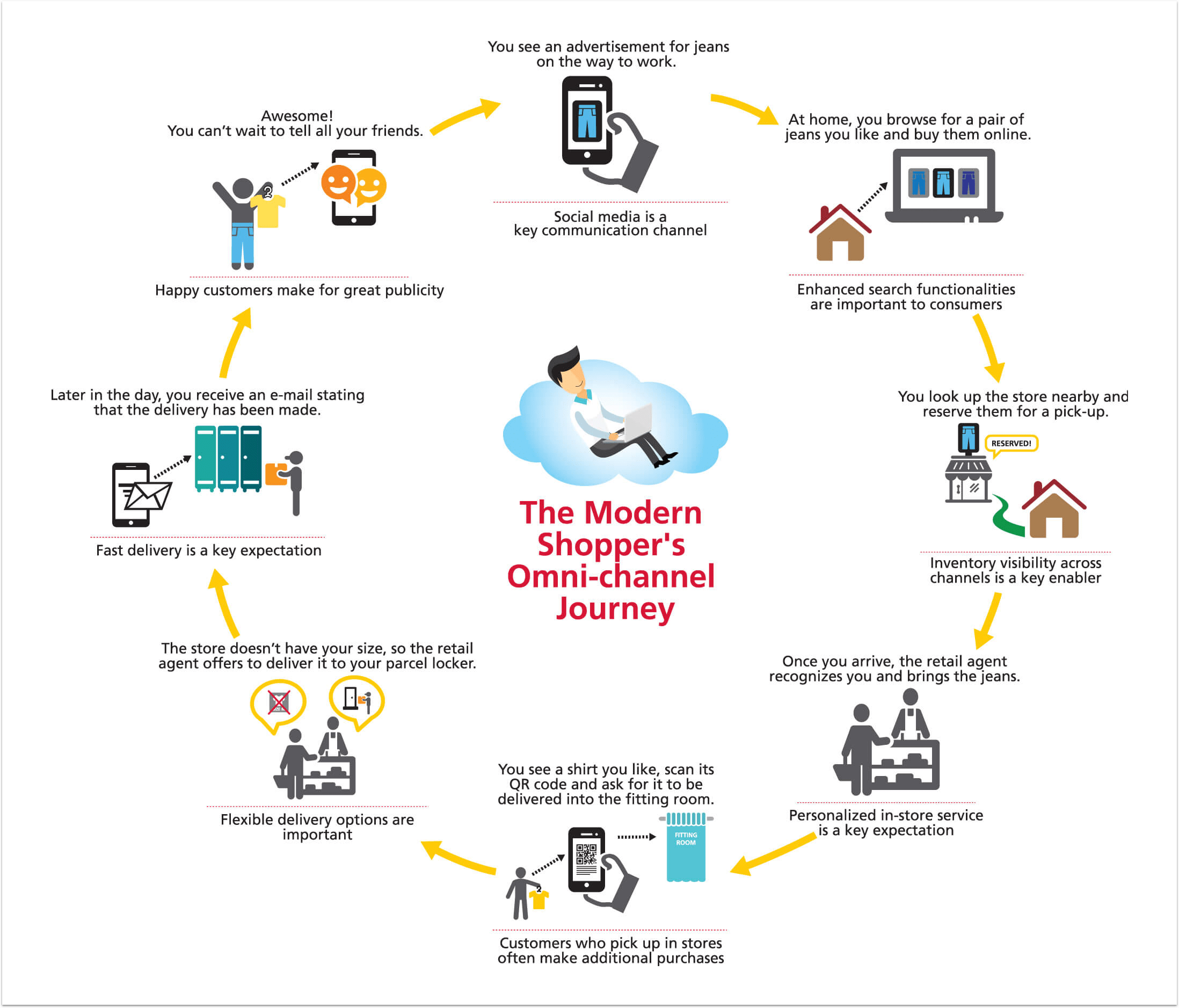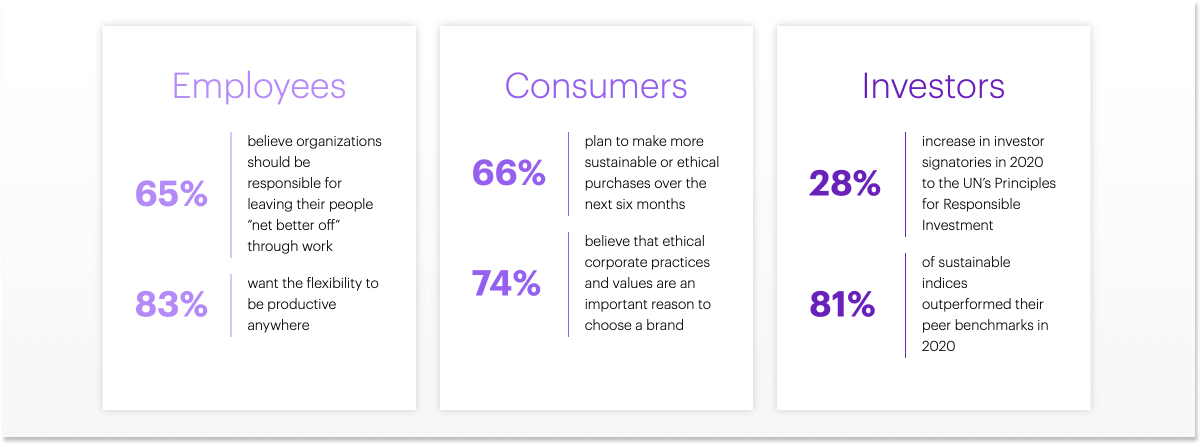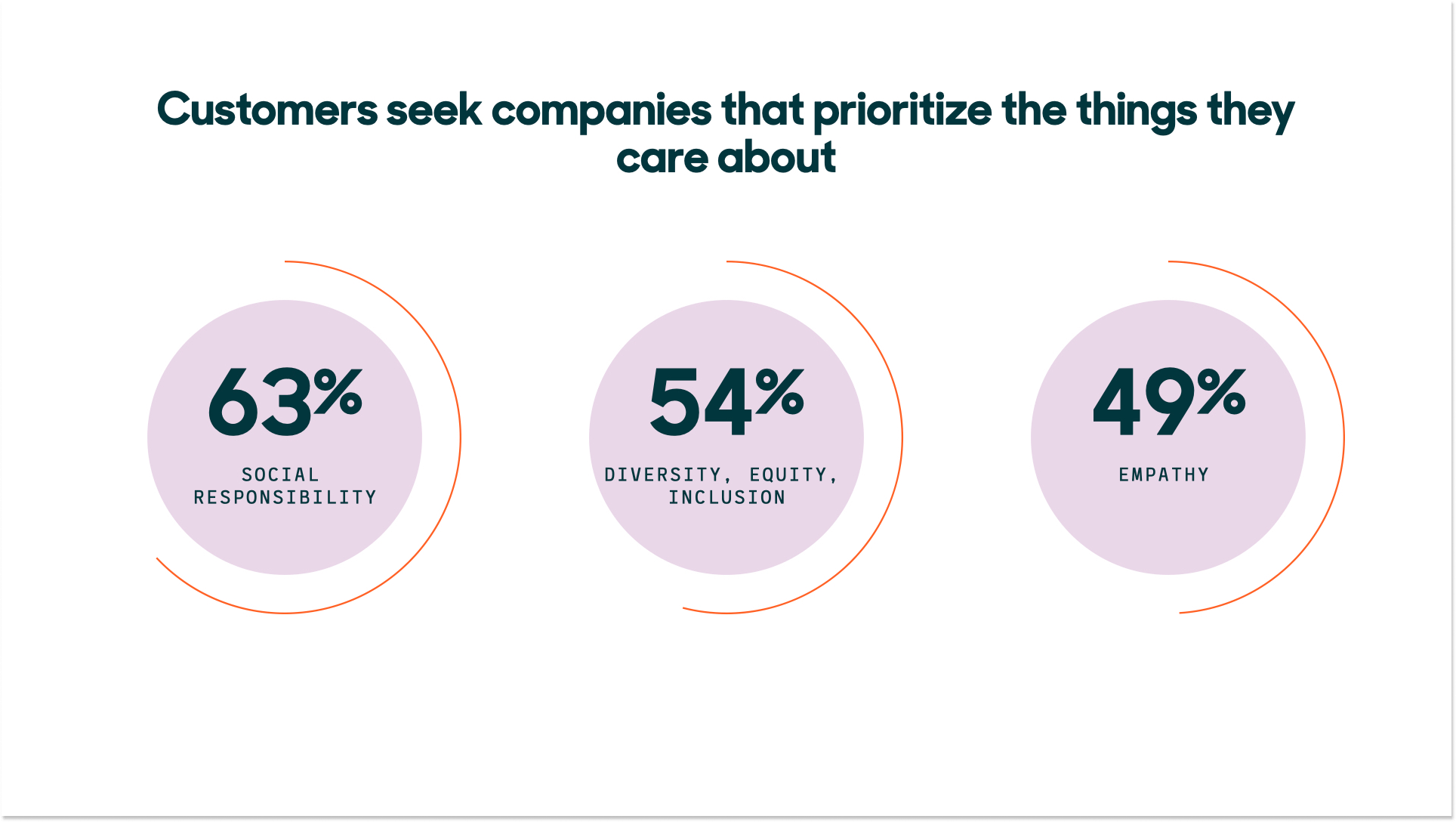2024 Customer Service Trends: Unveiling 10 Key Transformations
Check if your business is ready for these 10 customer service trends that are coming this year.
Written by Anastasiia Khlystova

As we head into 2024, innovations and technologies play even more crucial roles in the customer service landscape.
Automations like AI, chatbots, and IVR (interactive voice response) systems are already part of our lives.
Service agents rethink their careers and work conditions, setting a clear preference for work-from-home.
Live chats and call centers are demanding nothing less than immediate responses from your customer support team.
Clients are reexamining their values and expect brands to be responsible for their impact on this planet and society.
Customer interactions become personal to the point when companies know your name, IP address, and social media accounts after the first visit.
So, is the cyberpunk future of customer service already here? And what are the hottest trends these days? Or, maybe nothing really changed since the first ticketing system? Let’s look at these ten emerging customer service trends in 2024.

10 customer service trends to help you get ready for what’s coming
1. AI can no longer be ignored
Automation isn’t exactly a new notion in the customer service trends. Mainstream IVR (interactive voice response) systems appeared in the ‘90s, while the first wanna-be chatbot, ELIZA, was created even earlier—in 1966.
Today’s chatbots are not what they used to be in the ‘60s. Back then, ELIZA would just pick random phrases from people and generate pre-prepared or pre-programmed responses based on them.
Chatbots were rather primitive until recently. But now artificial intelligence is a game-changer. The technology has been advancing rapidly ever since, with new and improved know-how appearing every year.
Now, AI-powered chatbots can analyze human language and learn from it over time. They can search the web and their inner knowledge base, generate interactive responses, and guide people from their first visit to the final purchase. All without human interaction.
So, does it mean that automation will entirely replace human agents? Who knows? But it’s definitely a force to be reckoned with in 2024.
2. The demand for customer service representatives will decrease
The demand for employees has snowballed in the last decade. But recently, this growth has been disrupted by the increasing popularity of various automation (someday, robots will replace us all, won’t they?)
According to the US Bureau of Labor Statistics, the employment of agents is projected to decline by 2 percent from 2018 to 2028. This decline is expected as AI, chatbots, self-service options, and more tasks are automated.
2% doesn’t sound like a big deal, but it’s still a colossal shift, considering how many people work in this industry. The same report says agents are still employed full-time in nearly every industry. Besides, retail, insurance, and business support industries are the largest employers.
Businesses have long understood that a high-quality customer support experience is the only way to stand out from competitors when other factors are equal. That’s why they invest in training, new technologies, and automation.
3. Customer service teams will keep working from home
You may have heard of the “Great Resignation,” or “Big Quit,” an economic trend in the US where employees voluntarily resigned from their jobs en masse. The tendency has been growing in popularity since the beginning of 2021.
Why? Back in 2020, the COVID-19 pandemic allowed employees to rethink their careers and, more importantly, their work conditions. And it still affects people’s choices. They are looking for jobs that will enable them to work from their own space and are willing to leave those that don’t. Additionally, many workers strive for better work-life balance considering global political and environmental instability.

Interestingly, in late 2020, when companies began to transition workers back to the office, 56% of agents refused to go back and continued to work remotely. It looks like if you are not ready to provide a WFH (work-from-home) opportunity, you may lose over half of your employees. As business author Alan Deutschman says, “Change or die.”
Moreover, teams may have a point to bring this swing into trends. They can easily do the job anywhere if you provide sufficient equipment, reliable software, and training.
This approach can even help to improve customer service interactions. Since agents are involved in a stressful job, having the comfort and quiet of their homes may help them increase productivity.
So, if you haven’t already, deploy a communication platform that can help your agents offer online customer service wherever they are. Also, consider improving security protection and ensuring that employees still experience a sense of human connection and purpose even at a distance.
4. Customer service goes omnichannel
Contrary to common belief, omnichannel customer service is not just offering multiple messaging channels to your clients (if anything, it’s called multichannel).
Omnichannel means offering such a seamless customer experience across those various communication channels that people won’t even notice the difference. For example, if you have a brick-and-mortar store, an e-commerce website, and a mobile app, they should perfectly sync. Сustomer data should be fresh and instantly updated across all channels.
At least, such are customer expectations of modern businesses. So many researchers have confirmed this already that I can cite them all day. Here are just a few:
- 75% of consumers seek a consistent experience regardless of how they interact with a company.
- 43% of business leaders report a rise in customer demands for omnichannel experiences.
- Nike’s emphasis on omnichannel strategies has propelled e-commerce sales to account for over 30% of its total business.

One thing is for sure. In 2024, omnichannel support isn’t a customer service trend you MIGHT consider—it’s a MUST. People will switch from desktop to mobile, from a website to a mobile app, from a live chat to social media. And you must meet them everywhere with up-to-date information and timely customer service.
Modern tools have made it even easier. For instance, HelpCrunch, as an all-in-one customer communication tool, connects live chat, chatbot, social media, and email correspondence while collecting real-time data about every customer. Support agents can access default info like visitor’s language or time zone, while you can also transfer your custom data.
5. Customer service is becoming real-time
Let me put it this way. Customers’ expectations are constantly rising to the point where ALL businesses, like Amazon or Google, are expected to be fast and convenient. As Brad Birnbaum, CEO and founder of Kustomer, so accurately put it:
Since Amazon first showed its success by democratizing consumer ease and changing how we view what’s possible, just about anything can be delivered to your house within 24 hours. A car can show up for you within minutes. A new wardrobe can arrive within a day or two. Groceries can come within minutes…
… With every great on-demand experience customers have with one brand, they expect it to be replicated by other brands, regardless of industry.
So, where are we on the whole real-time thing?
The most common customer support channels haven’t really changed over the past decade. Email, live chat, and phone calls are staying popular among users, with social media platforms becoming increasingly drawing. What has changed is the time that people are willing to wait. That’s why providing real-time support with a first response time of 1 minute or less is one of the biggest customer experience trends now.
But don’t be afraid just yet. Real-time doesn’t mean you have to hire dozens of call center operators and go all-in on it. There are several ways to show people your customer service efforts in this field:
- A live chat on your website or online store will allow your customer support agents to handle several customer requests simultaneously.
- Offering detailed self-service portals with answers to all common questions.
- Incorporate a chatbot to answer basic questions and find relevant articles in your help center.
6. Personalization has never been so personal
Account-based targeting had hardly gained wide popularity before the new trend took its place—people-based targeting. Before, businesses tried to provide personalized experiences to certain companies; now, customer service can target particular people within those companies.
For instance, tools like Userproof allow you to set dynamic website images, CTAs, and blocks of text that will change for each visitor and use cases separately. Basically, you can create different versions of your website with unique experiences for customers.
Proactive customer service went even further. You can now see chatbot messages that target you precisely based on your behavior and can call you by name and mention your personal info.

Of course, the other side of this medal is the question of necessity. Does it really make sense to take personalization this far? Where is the line between personalized and creepy?
I guess we’ll see. Among other customer service trends, this one is relatively new and too soon to draw any conclusions. But one thing is for sure: you can’t target every potential lead the same way. Segmentation and personalization are significant new trends; you can still jump on the hype trend.
7. AR and VR can be a great way to stand out
All tech publications predicted augmented and virtual reality unprecedented success in business just three years ago. And although marketers have been discussing various ways to implement this tech, you don’t usually see them succeed. Not often, that is.
There’s a straightforward reason for this. Due to the high price and complexity, AR/VR is still mostly available to big brands with vast resources. But that only means that if you try to implement AR and VR in your strategy, this improved customer experience will give you an edge over the competition—for instance, the IKEA Place app. You can install it on your phone and try how any piece of furniture will look in your room through AR technology.

So yeah, I don’t think AR/VR technologies will be the next big thing in the customer service industry. For one thing, it’s still inaccessible for mid-size and small businesses. But if you have some innovative ideas, maybe they’re worth a try.
8. Customers expect companies to lead with their values
Driven by abnormal storms, fires, and floods all around the planet, many people have reexamined their values. And now, they expect brands to lead with their new worldview. I am talking about conscious consumption, environmental impact, equity, and inclusion matters.
It’s not enough anymore for companies to just provide fast and friendly service. At this point, you should connect with people on their concerns.
So, whether it’s social responsibility or inclusion, consumers are increasingly turned on by what companies stand for. In fact, in 2024, value-related criteria will become as important as price and quality, especially for younger groups.
Here are a few statistics to give you a better understanding of what I mean.
- Deloitte’s outlook on 2022 predicts that brands will be reevaluating why they exist and how to make a positive impact beyond profit. The research shows that 57% of US consumers are more loyal to brands that commit to addressing social inequities.
- Accenture’s recent report demonstrates that 66% of customers plan to make more sustainable and ethical choices when buying products in the next half a year. Moreover, this shift applies not just to customers but to employees and investors as well.

- International Data Corporation confirms that environmental, social, and corporate governance will become dominant trends in 2024. The research company also indicates that this new trend already influences investments worldwide.
If you struggle to understand the topics that concern your target audience precisely, turn to customer data. By getting to know them better, you’ll be able to build strong connections with them and earn customer loyalty.
9. Self-service is still a critical tool for retention
Although we are used to the FAQ section or the knowledge base just hanging out in the digital corner, they are actually the unsung heroes of excellent customer service. And with the leap in AI, chatbots in customer service are becoming smart enough to bombard users with links to relevant articles. Self-service reaches a new level.
Besides, around 59% of clients still favor using self-service customer support tools for straightforward customer issues. Thus, it’s time to shine a spotlight on it because it’s still your golden ticket for customer retention. And if you think about it, you’ll realize that self-service actually helps you a lot in the first place.
- Quick wins for common issues: Let’s face it, some customer service requests pop up like clockwork. With a robust self-service setup, your customers can zip in, find a solution, and zip out. Quick wins mean happy customers. Happy customers mean repeat business.
- Data-driven insights: Self-service is a goldmine of insights for you. Track what questions pop up most frequently, analyze user behavior, and refine your offerings. It’s like having a focus group that never gets tired of providing feedback.
Your customers are more tech-savvy nowadays. They want information, and they want it pronto. Self-service tools give them the keys to the kingdom, allowing them to find answers at their own pace.
10. Data security is now a must
Keeping people’s data safe is non-negotiable in the wild world of customer service, where trust is your currency. When people reach out to you, they hand over a chunk of their personal information. It could be anything from their contact details to their purchase history. Trust is the glue that holds your customer relationships together. So, safeguarding their data is like keeping that glue superglued.
Moreover, we are talking about real currency as well. It takes an average of 207 days to detect a breach. This results in a staggering fact: the worldwide average cost of a data breach in 2023 rose to $4.45 million, marking a 15% increase over three years.
Thus, 2024 is about more than just flying cars and virtual assistants (well, not yet). It’s also about an uptick in cyber threats. Hackers are getting craftier, and your customers are more aware than ever.
Besides, governments worldwide are tightening the screws on data protection. Regulations like GDPR and CCPA are not just jargon but a wake-up call. Non-compliance can hit your pocket hard and tarnish your brand faster than you can say, “Are we secure?”
Don’t be reactive customer service. Be proactive. Regularly update your security protocols, train your team on the latest threats, and stay ahead of the curve. An ounce of prevention is worth a pound of cure, my friends.
Bottom line
Optimal customer service isn’t developing in a vacuum where nothing new can come. Like any other industry, it’s also primarily influenced by hype trends like artificial intelligence or virtual reality.
But there’s one thing in the customer service industry that will never go out of fashion: genuine, timely help. Get a decent customer service tool like HelpCrunch, give customers all the necessary means and ways to contact you, and your work is half done right there.






